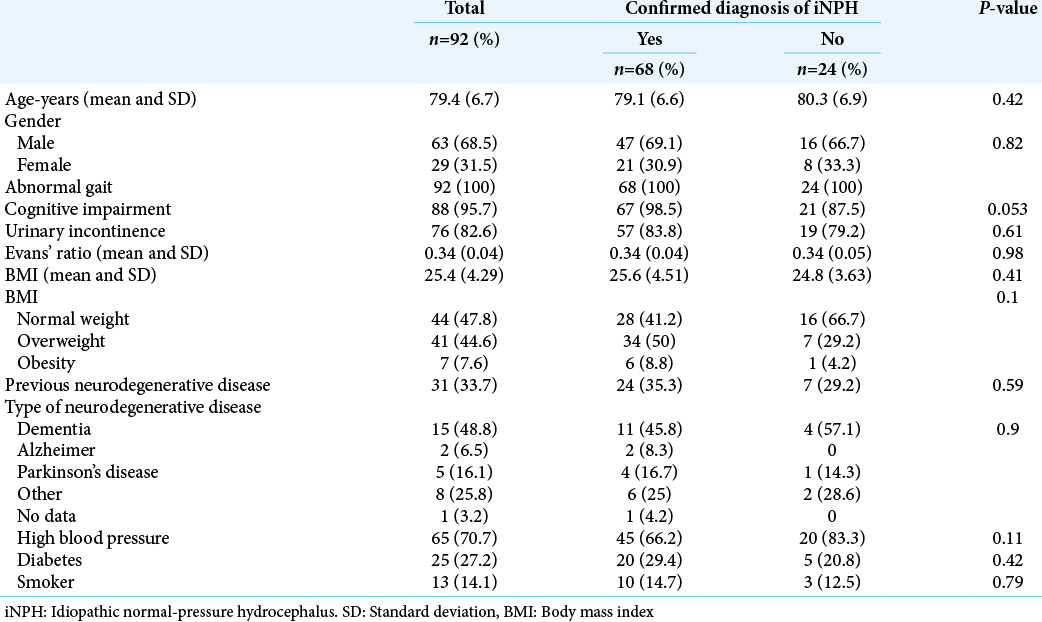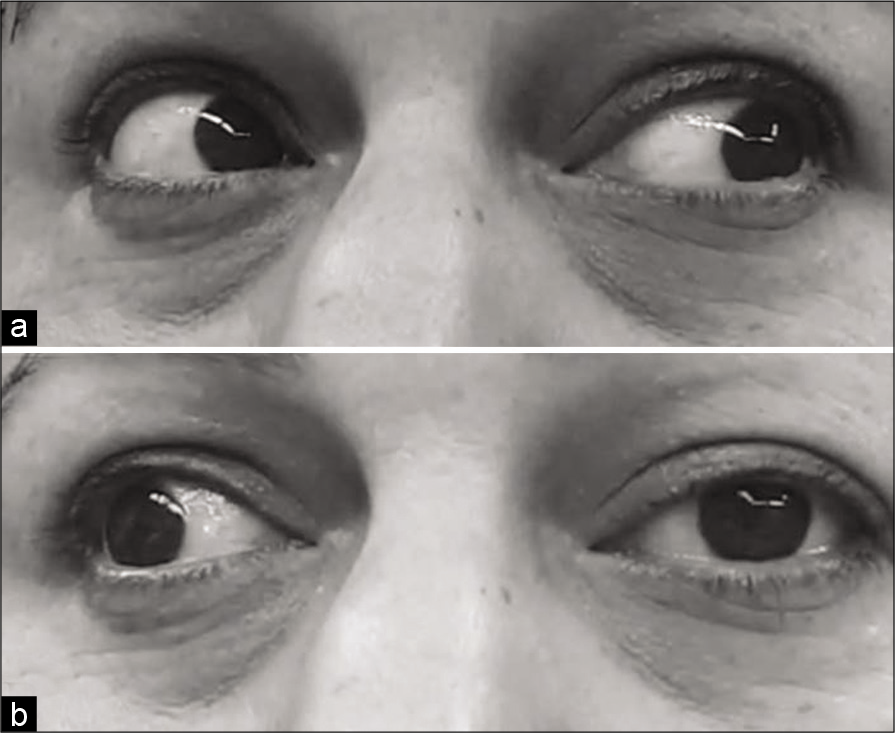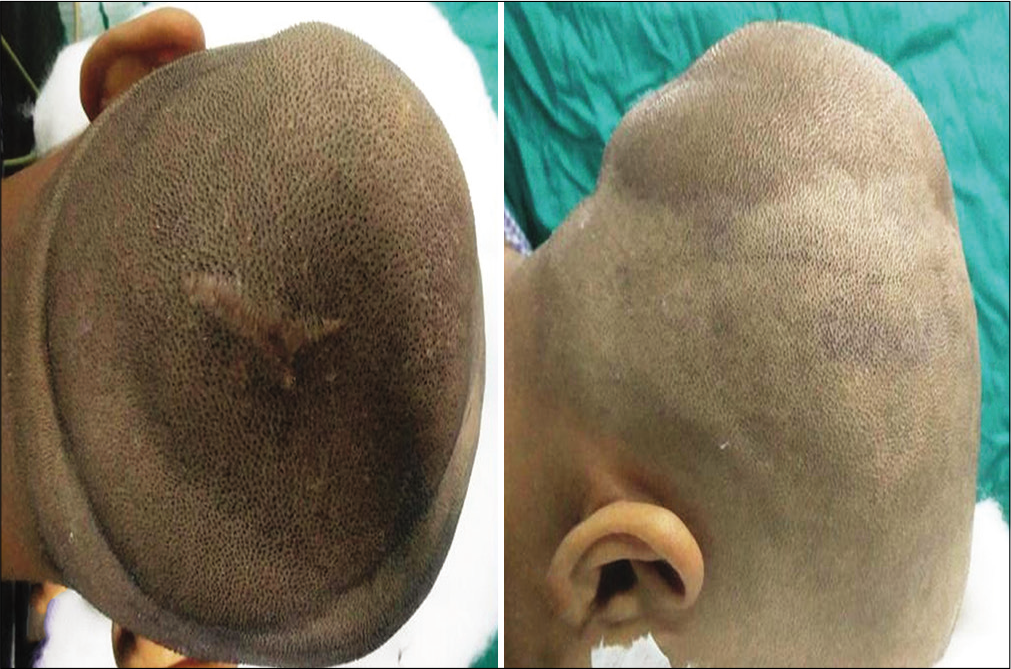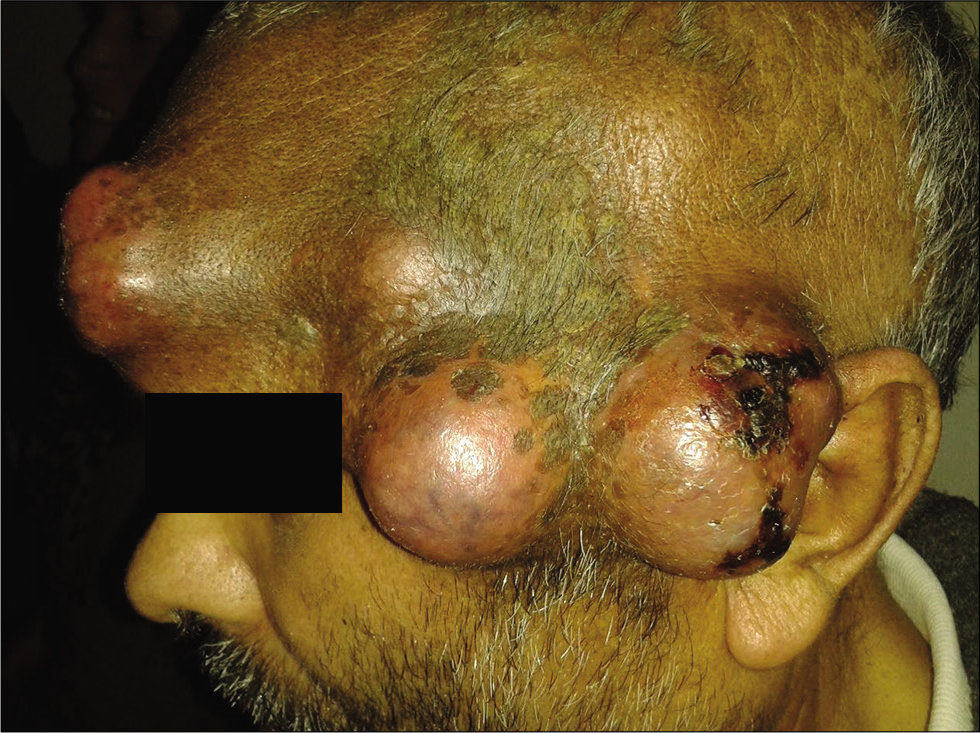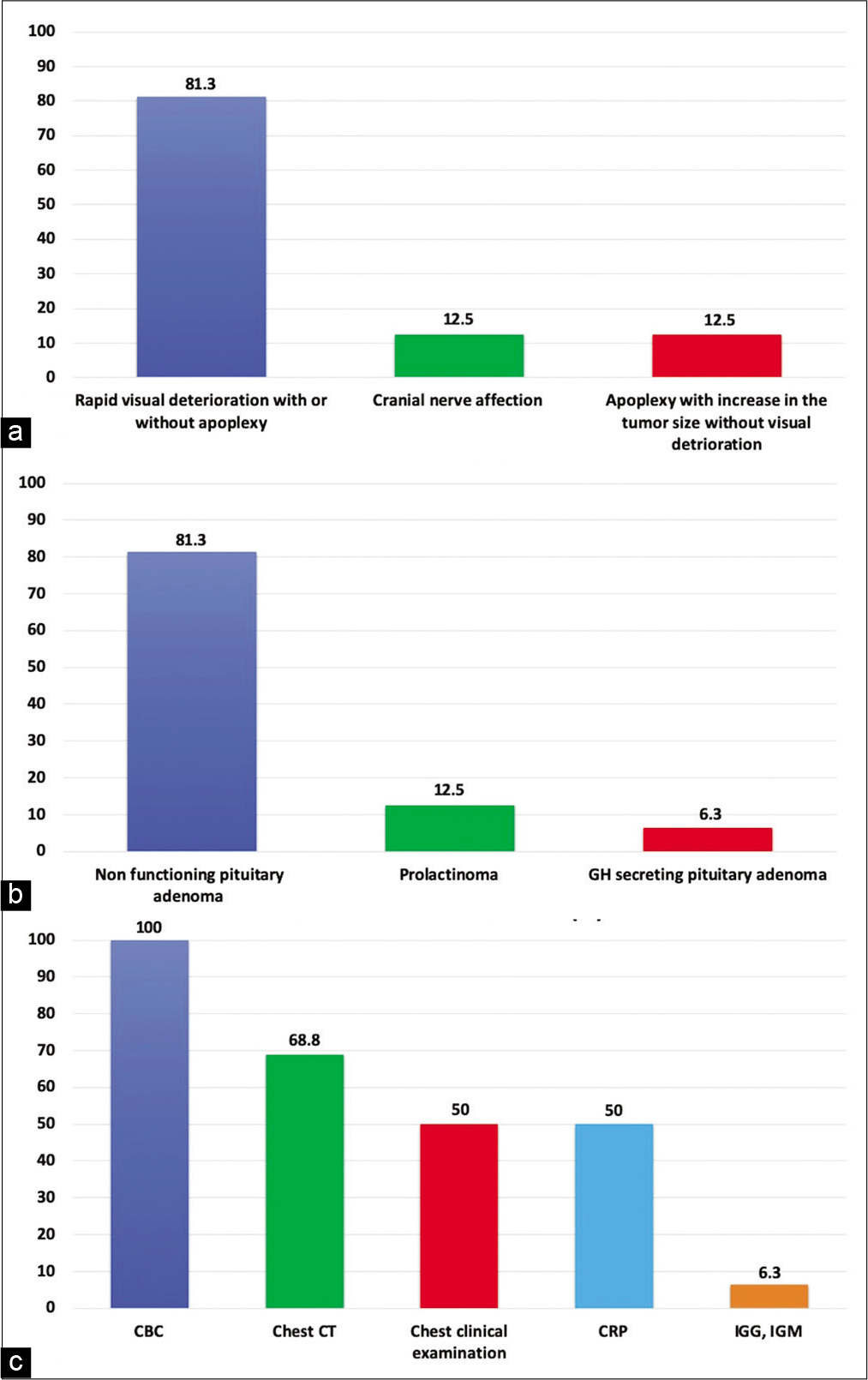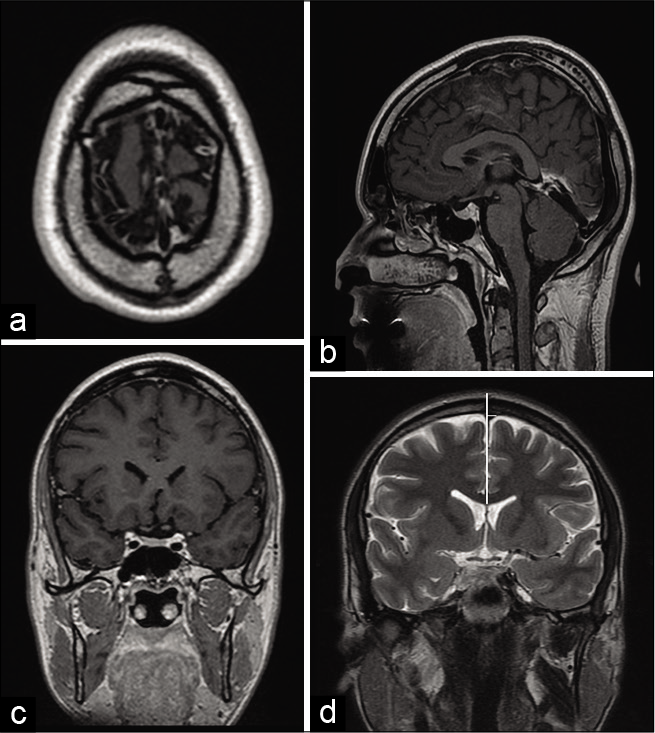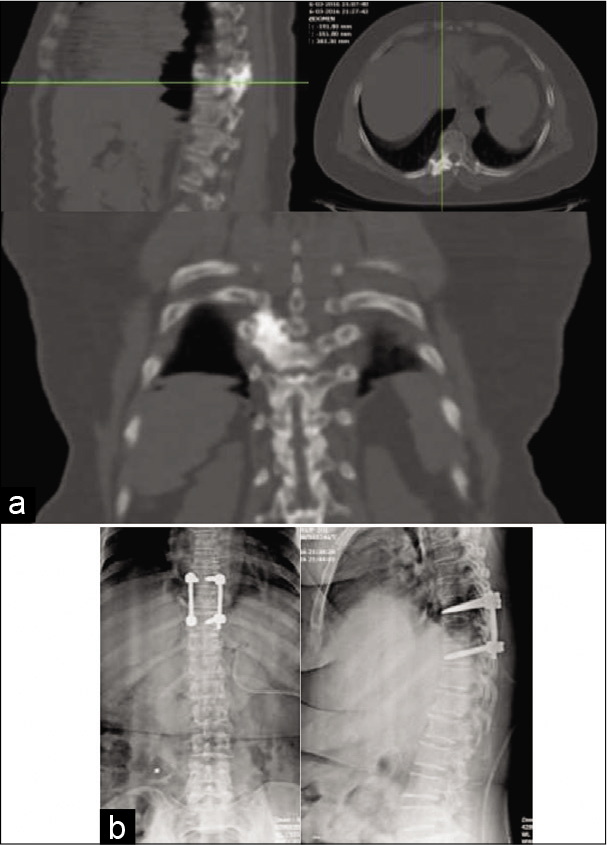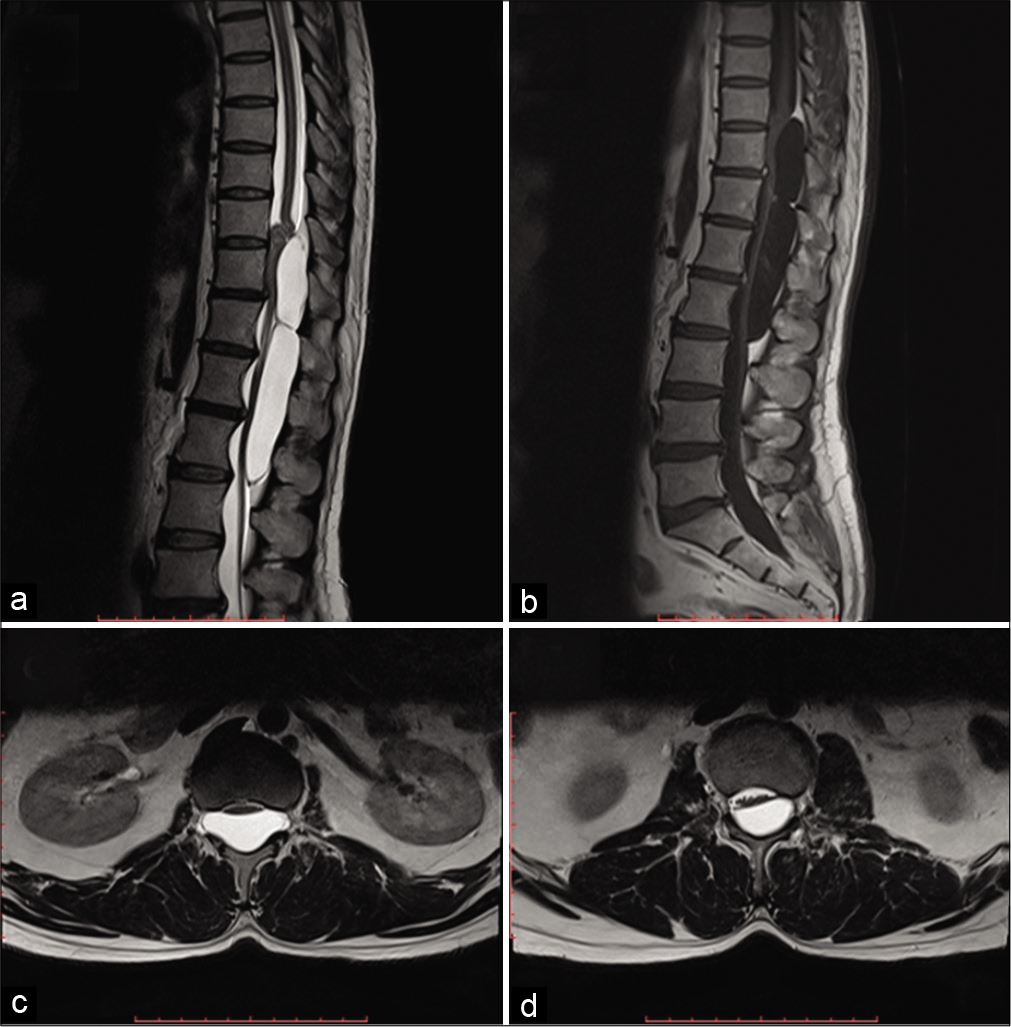Cerebrospinal fluid closing pressure-guided tap test for the diagnosis of idiopathic normal pressure hydrocephalus: A descriptive cross-sectional study
Date of publication: 02-Oct-2020
Background: Tap test improves symptoms of idiopathic normal pressure hydrocephalus (iNPH); hence, it is widely used as a diagnostic procedure. However, it has a low sensitivity and there is no consensus on the parameters that should be used nor the volume to be extracted. We propose draining cerebrospinal fluid (CSF) during tap test until a closing pressure of 0 cm H2O is reached as a standard practice. We use this method with all our patients at our clinic.
Meningothelial meningioma of the oculomotor nerve: A case report and review of the literature
Date of publication: 02-Oct-2020
Background: The origin of meningioma tumors is known as the meningothelial or arachnoid cap cells. The arachnoid granulations or villi are concentrated along with the dural venous sinuses in the cerebral convexity, parasagittally, and sphenoid wing regions. The majority of meningiomas are found in these locations with dural attachment. Infrequently, meningiomas develop without dural attachment but in dural adjacent. There are numerous reports of patients with cranial nerve involvement as a result of the compressive effect of the sinus cavernous or adjacent structures meningioma tumor on the cranial nerve.
Rapidly growing diffuse neurofibroma of the scalp with calvarial defect in a young woman: A rare entity
Date of publication: 02-Oct-2020
Background: A diffuse neurofibroma, a variant of neurofibroma, most commonly occurs in young adults and involves the head and neck. In the absence of neurofibromatosis, associated calvarial defect with these swellings is rarely seen.
Case Report (Precis): Patient with MR-Documented Large Lateral Cervical Disc Misdiagnosed as Neurodegenerative Disease
Date of publication: 25-Sep-2020
Background: Patients who present to neurologists with cervical radiculopathy typically undergo initial MR scans. If reports show “abnormal” findings they, and other physicians, should review the studies with the interpreting radiologists/neuroradiologists. When patients’ neurological deficits progress, neurologists should review their electromyographic (EMG) findings (i.e. especially if documenting neurodegenerative disease), the initial “abnormal” MR scans/reports (i.e. review with radiologists/neuroradiologists), and obtain spinal surgical consultations to rule out “surgical” disease.
Bumpy head, unusual gliosarcoma metastasis
Date of publication: 25-Sep-2020
Endoscopic endonasal skull base surgery during the COVID-19 pandemic: A developing country perspective
Date of publication: 25-Sep-2020
Background: Although primarily a respiratory disorder, the coronavirus pandemic has paralyzed almost all aspects of health-care delivery. Emergency procedures are likely continuing in most countries, however, some of them raises certain concerns to the surgeons such as the endoscopic endonasal skull base surgeries. The aim of this study is to present the current situation from a developing country perspective in dealing with such cases at the time of the COVID-19 pandemic.
Relationship of superior sagittal sinus with sagittal midline: A surgical application
Date of publication: 25-Sep-2020
Background: Interhemispheric approach is widely used to surgical management of midline tumors and vascular lesion in and around the third ventricle. Complete exposure of the superior sagittal sinus to obtain adequate working space of midline lesion is difficult, because of the risk to inadvertent injury to the sinus and bridging veins, which may cause several neurological deficits. Understanding the SSS neuroanatomy and its relationships with external surgical landmarks avoid such complications. The objective of this study is to accurately describe the position of SSS and its displacement in relation with sagittal midline by magnetic resonance imaging.
Spinal osteoid osteoma: Surgical resection and review of literature
Date of publication: 25-Sep-2020
Background: Osteoid osteoma (OO) is a rare benign tumor of the spine that involves the posterior elements with 75% tumors involving the neural arch. The common presenting symptoms include back pain, deformity like scoliosis, and rarely radiculopathy.
Bibliometric analysis of the top 100 most cited articles on the basilar artery
Date of publication: 25-Sep-2020
Background: The basilar artery (BA) is one of the most critical vessels that supply blood to the brain stem, cerebellum, and parts of the cerebral hemispheres. Many studies on the BA from neurobiological, clinical, and experimental perspectives exist. This bibliometric study was aimed at identifying the most-cited articles related to the BA in different disciplines.
Spinal extradural arachnoid cyst: Rare cases from Indian Institutes
Date of publication: 25-Sep-2020
Background: Spinal extradural arachnoid cyst (SEDAC), accounting for approximately 1% of all spinal lesions, rarely causes compressive myelopathy. It is usually found at lower thoracic or upper lumbar levels in males in their forties to sixties. The standard surgical procedures include direct dural repair.


